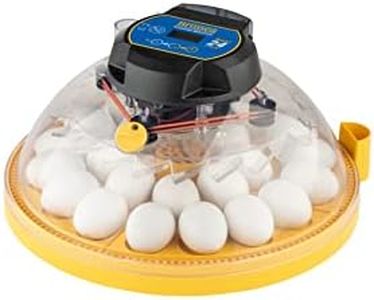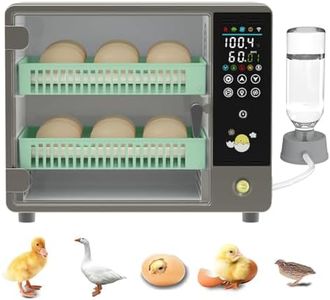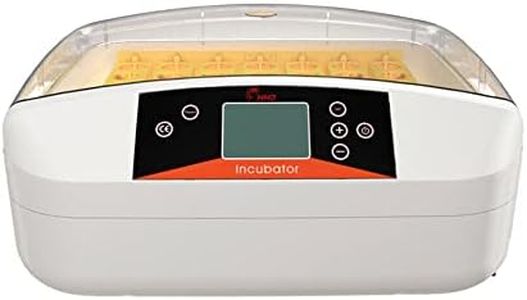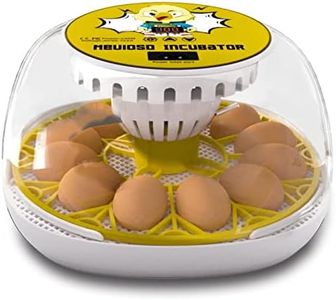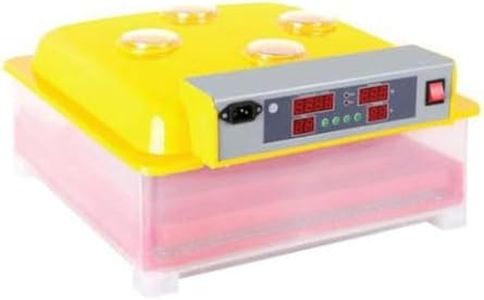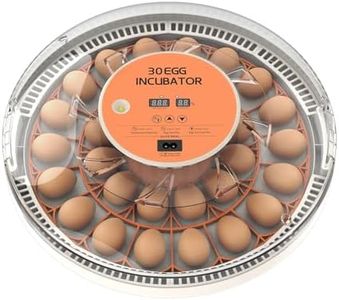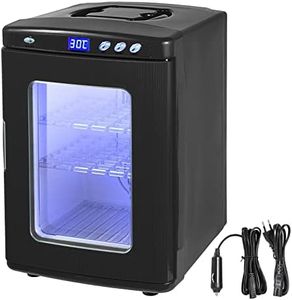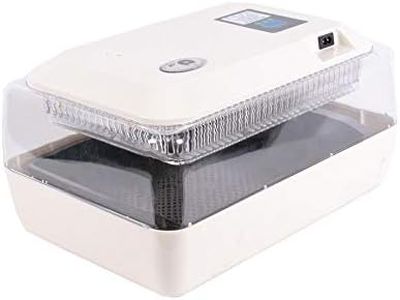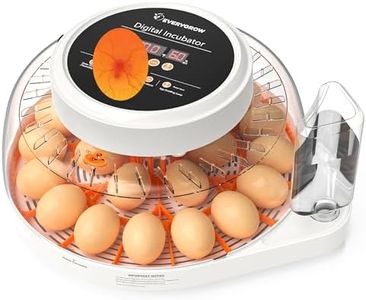We Use CookiesWe use cookies to enhance the security, performance,
functionality and for analytical and promotional activities. By continuing to browse this site you
are agreeing to our privacy policy
10 Best incubators
From leading brands and best sellers available on the web.Buying Guide for the Best incubators
Choosing the right incubator is important whether you're hatching chicken eggs, quail eggs, or even reptiles. Incubators provide a controlled environment that can greatly increase your success rate. Before picking one, think about your specific needs: How many eggs do you plan to hatch at a time? Are you interested in automation or do you prefer hands-on control? Each incubator comes with specific features that can fit various experience levels, hatching goals, and types of eggs. Focusing on the key specifications below will help you identify the model that's best suited for your situation.CapacityCapacity is the number of eggs an incubator can hold at once. This is crucial because it determines the scale at which you can hatch. Smaller incubators usually hold between 7 to 20 eggs, suitable for hobbyists or those starting out, while larger models can handle 40 eggs or more, ideal for small farms or those looking to hatch multiple species at once. Match the capacity to your needs—if you plan to hatch occasionally or in small batches, choose a lower capacity model. If you want to hatch frequently or in larger numbers, look for higher capacity options, keeping in mind the available space you have for the incubator.
Temperature ControlTemperature control refers to how the incubator maintains and displays the heat necessary for successful incubation, as eggs require stable warmth to develop properly. Basic models may use manual dials or simple thermostats, while more advanced models feature digital displays and precise automatic controls. Manual systems need you to check and adjust the temperature regularly, which is good for hands-on users or those who want to learn the hatching process. Digital or automatic controls are best for those who prefer convenience or can't monitor the incubator frequently, as they maintain temperature with greater precision.
Humidity ControlHumidity control determines how much moisture is in the incubator, which affects embryo development and hatching success. Some models have built-in hygrometers and automatic humidifiers, while others require manual adjustment through adding or removing water. High-end incubators often provide automatic humidity regulation, which is useful for people who want to minimize hands-on involvement or are hatching sensitive species. Beginners or hobbyists may feel comfortable with manual humidity control since it gives more learning opportunities, but it requires more attention to maintain proper levels.
Egg Turning MechanismEgg turning is the process of rotating eggs regularly to ensure even development. Some incubators turn eggs automatically at set intervals, reducing manual labor and reducing risk of mistakes. Manual models require you to turn the eggs by hand, which can be time-consuming but is fine for small batches or those wanting to learn the traditional method. Automatic turners are best if you plan to hatch many eggs, have a busy schedule, or want to lower the risk of forgetting this important step.
VentilationVentilation refers to the airflow inside the incubator, which is vital for providing fresh oxygen and removing carbon dioxide. Some models have built-in fans that maintain even temperature and airflow (often called forced-air incubators), while others rely on natural air movement (still-air incubators). Forced-air models provide more consistent results and are generally better for larger batches, while still-air incubators can be suitable for smaller numbers and require careful placement of eggs to ensure proper conditions.
Ease of CleaningEase of cleaning describes how simple it is to thoroughly wash and disinfect the incubator between uses, which is important for preventing the spread of bacteria and improving hatch rates. Incubators with removable trays, smooth interiors, or fewer tight spaces are generally easier to clean. If you plan to use your incubator often or hatch different species, choose one that's easy to take apart and wash. This can save you time and help keep your hatches healthy.
Viewing WindowA viewing window allows you to check on your eggs and monitor the hatching process without opening the incubator and disturbing the environment. Some incubators have large, clear windows, while others might only have small peep holes or none at all. If you're interested in observing progress, especially for educational purposes or family activities, opt for an incubator with a generous viewing window. If observation isn't important to you, this feature may not be necessary.

